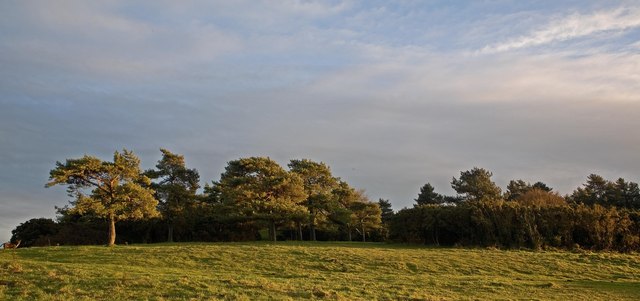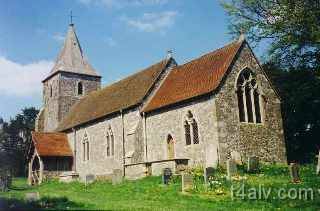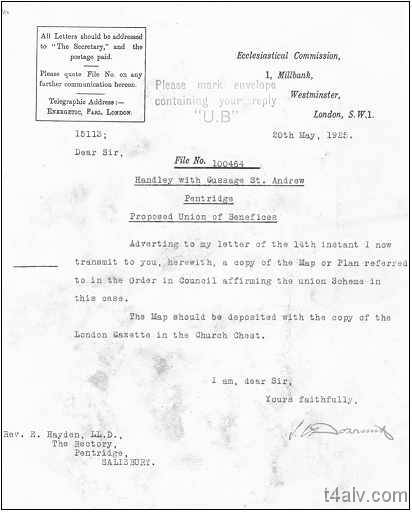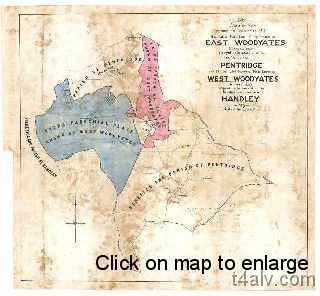Our home from 1988 to 2006
Pentridge , like so many places on the Cranborne Chase hunting ground of old, is a little hamlet, hiding at the end of a lane off the Salisbury-Blandford road and is thus quiet and isolated, always in the shadow of Pentridge Hill.

Photo by Simon Barnes
With the heights of Cranborne Chase on the other side of the road, Pentridge could almost be said to be at the gateway into Dorset.
Beyond the village lies Pentridge Hill a long, whaleback-shaped feature. Standing above the gently rolling chalk down lands of north-east Dorset, it is formed by a harder, more resistant band in the chalk, which also forms Windmill Hill in Hampshire, just to the east, and the more distant Gallows Hill in Wiltshire.
Penbury Knoll (606 feet), with its thicket of pines, is the highest point of Pentridge Hill. The deep coombes on either side were probably formed in the Ice Age, when they would have been filled with snow for much of the year; freezing and thawing around these patches of snow would have enlarged the Ice Age hollows to their present size.
In the fields just to the east of Penbury Knoll there are numerous small, rounded flint pebbles, which indicate that the highest parts of Pentridge Hill carry an isolated capping of much younger rocks than the chalk, the Reading Beds. These pebbly sands appear at the surface in a more continuous belt to the south-east between Fordingbridge and Horton.
From the name, it would appear that wild boar roamed this very ancient place on Cranborne Chase - in fact, it is one of the few places in Wessex to preserve its ancient place name. It comes from the Welsh: pen - hill, twrch - boar. The first recorded name of the hamlet, Pentric, appeared 80 years before the birth of Alfred.

The church at Pentridge, dedicated to the memory of St. Rumbold, stands at the north-western end of the village, and its tower can be seen from the Ringwood to Shaftesbury road through two fir plantations.
On the wall opposite the organ is a roll of honour to past rectors of the church, starting with Robert Leicester in 1295.
There are some inscriptions, including a stone tablet reset in the south wall of the Chancel, recording the rebuilding of a former chancel in 1815 under Thomas Hobson, rector.
There is also a marble tablet on the north wall of the Nave in memory of Robert Browning and his wife Elizabeth, great great grand-parents of Robert Browning, the poet (1812-1889); the tablet was erected by admirers of the poet in 1902.
In 1109, Joceline, Bishop of Salisbury - the man responsible for building the spire on Salisbury Cathedral - verified that St. Rumbold's belonged to the Abbey at Tewkesbury.
Joceline was giving evidence to a "baron court", which was trying to determine the ownership of the land at Pentric.
At that time, there seemed to be some doubt about title, but William, the new Earl of Gloucester, also confirmed that his father had given the monks of Tewkesbury the church as a gift.
However, he did not agree that the manor had also been donated to the monks.
From the account in the Reverend John Hutchins' excellent "History of Dorset" - compiled between 1740 and 1774 - it appears that the Earl of Gloucester did not win the case, because in 1291 a pension from the benefice was paid to the Abbey at Tewkesbury.
In that year, the church was valued at six marks - a mark being the equivalent of eight ounces of gold.
The abbot eventually appointed Robert Leicester as the first known Rector of Pentridge.
 At the time of the dissolution of monasteries, the ownership of the church reverted back to the Crown for dispensation, and rectors continued to maintain St. Rumbold's, under the Crown's patronage, until the late nineteenth century.
At the time of the dissolution of monasteries, the ownership of the church reverted back to the Crown for dispensation, and rectors continued to maintain St. Rumbold's, under the Crown's patronage, until the late nineteenth century.

Pentridge church is now within the diocese of the Bishop of Salisbury, and the diocesan registry at Salisbury shows details of the union of the benefices of Handley (Sixpenny Handley) and Pentridge.
In 1925, the scheme of the union was presented on the 9th of March, confirmed on the 2nd of May, and came into operation on the 31st of August, when the Reverend Hasluck, the incumbent at Handley, resigned.
The Reverend E. Hayden was the incumbent at Pentridge at the time, and on the 31st of October he became the first incumbent of the new United Benefice.
The letter, which is addressed to the Rev. Hayden, and dated 20th May 1925, says:
Advarting to my letter of the 14th instant I now transmit to you, herewith, a copy of the Map or Plan referred to in the Order in Council affirming the union Scheme in this case
The Map should be desposited with the copy of the London Gazette in the Church Chest.